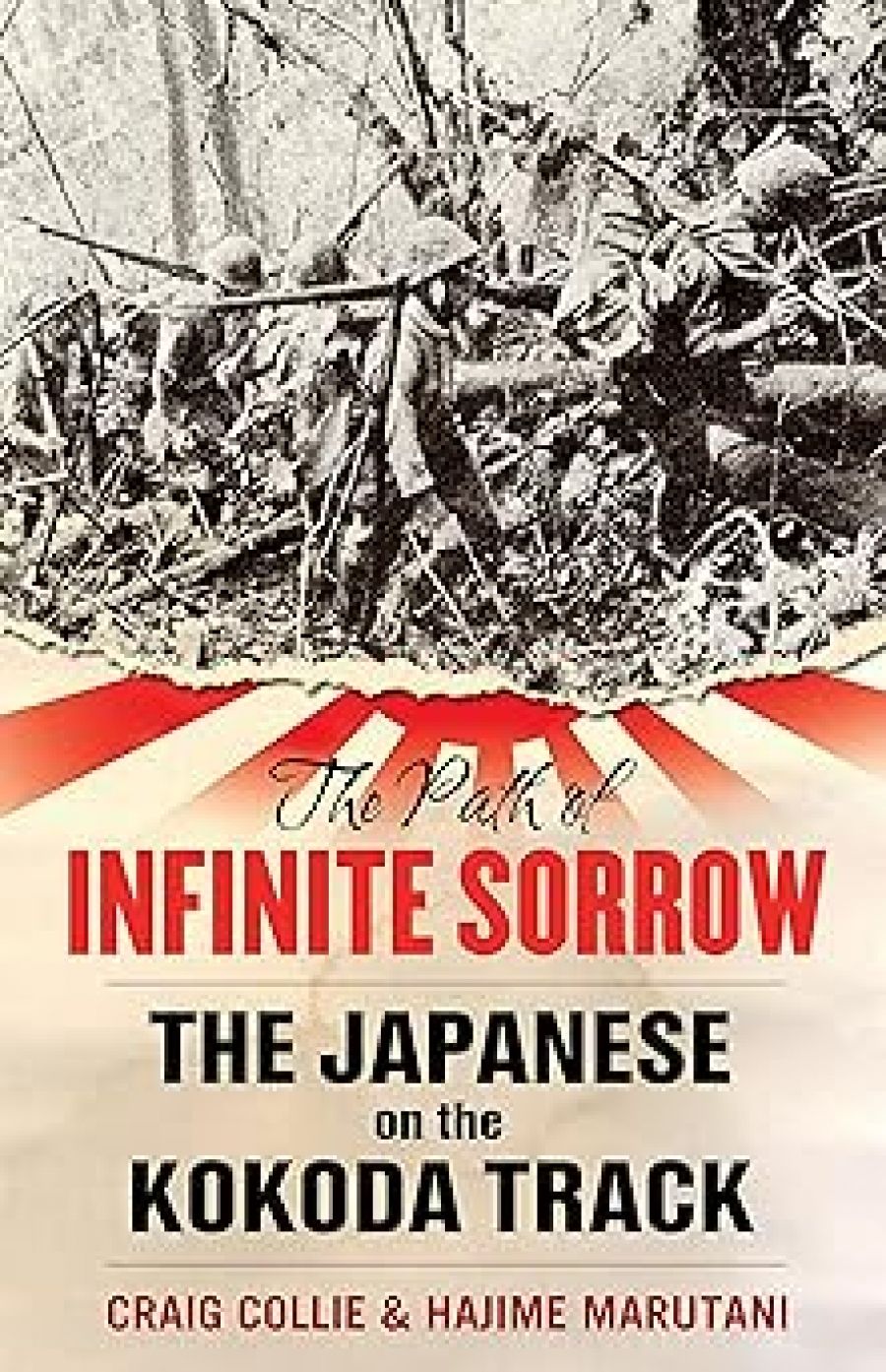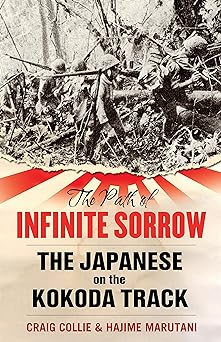
- Free Article: No
- Contents Category: History
- Review Article: Yes
- Article Title: Infinite scrutiny
- Online Only: No
- Custom Highlight Text:
Not surprisingly, publishers often claim that their latest offering takes the reader down a path never before trodden, to reveal new insights and understandings of well-worn topics and events. The Path of Infinite Sorrow is no exception, with the promise of a ‘whole new perspective’ on the Japanese side of the story of the Kokoda campaign in Papua during the early stages of World War II. In recent years, the status of Kokoda has challenged that of Gallipoli in the national consciousness, with a number of lengthy tomes, guidebooks, journal articles and newspaper articles, not to mention a feature movie, devoted to the campaign. But why another book, and does it offer anything new?
- Book 1 Title: The Path Of Infinite Sorrow
- Book 1 Subtitle: The Japanese On The Kokoda Track
- Book 1 Biblio: Allen & Unwin, $35 pb, 324 pp
- Book 1 Cover Small (400 x 600):

The authors, Craig Collie and Hajime Marutani, met during the production of the independent documentary Beyond Kokoda, which was screened on the History Channel in 2008. Originally intended as an iconoclastic examination of the campaign, Beyond Kokoda became a well-crafted series of highly personal vignettes of Japanese and Australian veterans of the fighting. The Path of Infinite Sorrow grew out of the many hours of interviews with the Japanese veterans conducted by Marutani for the documentary, fascinating and often moving material that would otherwise have been discarded.
The extracts from the interviews are the strength of the book. Often extremely personal and revealing, they provide insights into specific aspects of the experience of battle. Yokoyama Yoriichi, for example, tells of the impact of seeing the face of a young Australian pilot overhead, just before the Australian’s plane clipped a wing and crashed. Nishimura Kōkichi related an encounter on Christmas Day 1942 when a colleague boldly approached an Australian position and returned with a feast of food. Many of the stories are not as uplifting, relating darker encounters and tales of cannibalism, execution and deprivation. Nevertheless, from the pages of The Path of Infinite Sorrow emerge the voices of Japanese soldiers as a counter to the dominant Allied narrative of the Kokoda campaign.
The authors have placed the disparate interviews within a broader narrative of the Kokoda campaign. This narrative has been reconstructed from mostly familiar sources, but the generalisations and conclusions often betray the authors’ limited breadth and depth of reading in the field. Aside from wartime intelligence reports and several unit diaries, there is little use of primary material. Further, the list of secondary sources in the bibliography is somewhat light. Good use has been made of the Japanese official history account, recently translated and published by the Australian War Memorial. There are also scattered references to Japanese secondary sources – no doubt translated by Marutani – not previously used in English-language accounts. As a result, the text is more engaging and authoritative when based on these materials in combination with the interviews.
Nevertheless, historians have long recognised that great care needs to be taken in the use of firsthand accounts and oral testimony, particularly in relation to traumatic events in the distant past. Eyewitnesses will often provide different, even conflicting, accounts of the same event. The authors themselves were aware of the traps here, but rather than heed their own warning, they concluded that ‘history can be fiction, a retelling of events as they felt, not as they were’. Such an approach can lead to an arbitrary acceptance and presentation of descriptions of events without the desired scrutiny that is the bread and butter of the historian’s craft.
The most obvious and pernicious example of this is the description of the death of Captain Sam Templeton, commander of the 39th Australian Battalion at the opening of the campaign. The details of Templeton’s death, after his disappearance in the fighting near Oivi on 26 July, have never been established. A medical officer from the 15th Independent Engineer Regiment, Yanagisawa Genichirō (known during the war as Yanagisawa Hiroshi), claimed in his memoir, Aa, Minami Jūji no Hoshi (Ah, the Southern Cross, 1979), that he met a wounded Templeton in captivity and provided him with medical care. His widow, interviewed for the documentary, corroborated this testimony, but added no more detail. The Path of Infinite Sorrow, however, claims to have solved the mystery, relating how Lieutenant Colonel Tsukamoto Hatsuo, the commander of the 144th Regiment, 1st Battalion, killed Templeton in a fit of pique with a thrust of his ‘sabre’, which made ‘almost no sound’ as it pierced his belly. No source is given in the book, but it is clear from the documentary that the informant is Nishimura Kōkichi, whose reliability is else-where called into question by the authors. Nishimura was still in Rabaul at the time of Templeton’s disappearance and did not to join the fighting in Papua for another month. Such a sensational claim demands more care and scrutiny.
The Path of Infinite Sorrow is not the first book to relate the Japanese version, but it is perhaps the most accessible. It incorporates newly translated material and interviews undertaken for the related documentary to give a personal voice to the Japanese soldiers who fought the Australians in Papua in 1942–43. Though the book has shortcomings and fails to deliver a completely new perspective, it may bring some under-standing of the Japanese experience of war to a wider audience.


Comments powered by CComment